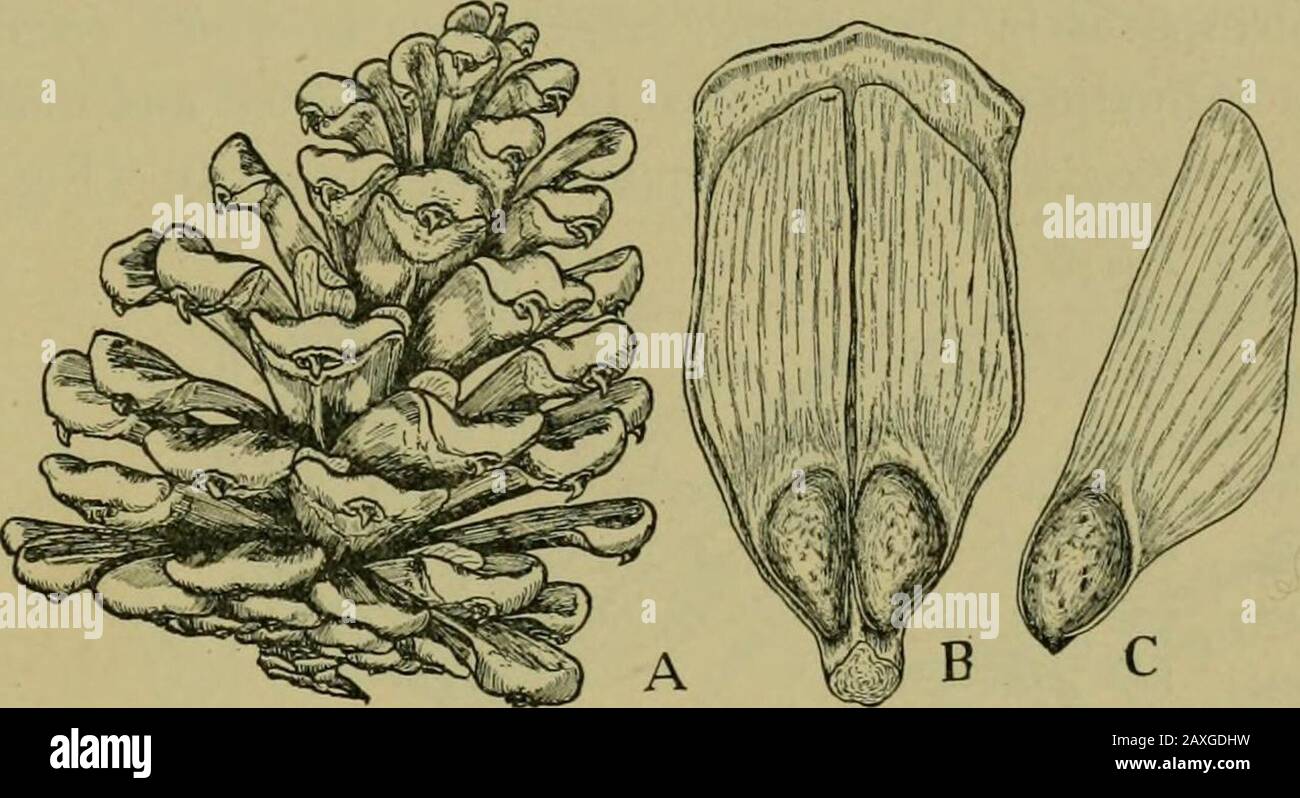Nature and development of plants . Fig. 257. Sectional view of pine seed: /. hard integument; g, gameto-phyte, often called the endosperm, which has completely consumed thesporangia! tissues. The embryo consists of a root, r, ensheathed in alarge root cap. cotyledons, r, and stem, s. DEVELOPMENT OF PLANTS 34i bryo matures it absorbs all the tissues of the sporangium, thusfilling the space within the integument (Fig. 257). The cellsof the female gametophyte are often called the endosperm.By these growths the seed is formed and prepared for its dor-mant state, as in the preceding order. In some

Image details
Contributor:
The Reading Room / Alamy Stock PhotoImage ID:
2AXGDHWFile size:
7.2 MB (335.2 KB Compressed download)Releases:
Model - no | Property - noDo I need a release?Dimensions:
2142 x 1167 px | 36.3 x 19.8 cm | 14.3 x 7.8 inches | 150dpiMore information:
This image is a public domain image, which means either that copyright has expired in the image or the copyright holder has waived their copyright. Alamy charges you a fee for access to the high resolution copy of the image.
This image could have imperfections as it’s either historical or reportage.
Nature and development of plants . Fig. 257. Sectional view of pine seed: /. hard integument; g, gameto-phyte, often called the endosperm, which has completely consumed thesporangia! tissues. The embryo consists of a root, r, ensheathed in alarge root cap. cotyledons, r, and stem, s. DEVELOPMENT OF PLANTS 34i bryo matures it absorbs all the tissues of the sporangium, thusfilling the space within the integument (Fig. 257). The cellsof the female gametophyte are often called the endosperm.By these growths the seed is formed and prepared for its dor-mant state, as in the preceding order. In some cases the integu-ment forms a membranous outgrowth, which assists in the dis-tribution of the seeds (Fig. 258, C). It is interesting to note. Fig. 258. A, mature strobilus of pine with open scales to permit thescattering of the seeds. B, scale from strobilus showing the winged seedsdeveloped from the two sporangia. C, a seed with wing-like outgrowth, as it escapes from strobilus. that the seeds are so attached to these wings that they rotate infalling to the ground, thus retarding their fall and making pos-sible a wider flight. The stimulus resulting from the fusion ofthe gametes also produces extensive changes outside of the spo-rangia. The sporophylls or their outgrowths often becomegreatly enlarged, forming the hard, woody scales of the cones(Fig. 258, B), or they may become fleshy and fuse, forming aberry-like fruit, as in the juniper (Fig. 260, 7). When thisgrowth has been completed, the woody sporophylls or scales ofthe strobilus dry out, and becoming hygroscopic, they spreadapart on dry days, thus permitting of the scattering of the seedsby the winds (Fig. 258, A). Many of the fleshy fruits are eatenby birds and the h